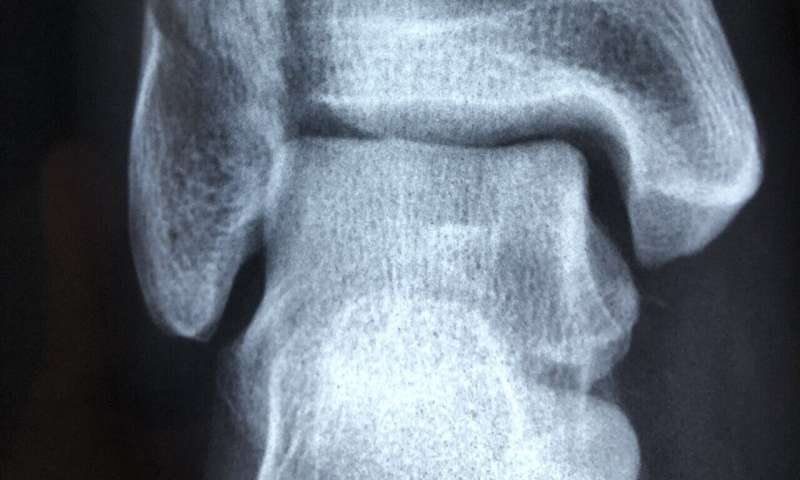Genetic link found between diabetes and bone fracture risk

A new method for studying gene function shows how high blood sugar and bone density are connected in diabetes patients.
Scientists have discovered thousands of genetic variants—tiny changes in the genetic code—that are linked to increased risk of various diseases. Learning what these variants do in the body is key to translating genetic insights into new precision medicines. Now researchers at the Broad Institute of MIT and Harvard, Beth Israel Deaconess Medical Center, Harvard Medical School, and others have developed a set of techniques, which the researchers call a Variant-to-Function (V2F) framework, that can help them to efficiently decipher the function of genetic variants—in particular, pleiotropic variants, which affect multiple traits.
In a study published in Cell Metabolism, the researchers used the framework to find a genetic link that potentially explains why patients with type 2 diabetes have increased bone mineral density yet greater susceptibility to fracture. They pinpointed a variant on chromosome 3 that increases the risk of both hyperglycemia, or high blood sugar, and high bone density—two common symptoms in these patients. The team also demonstrated the mechanism of how the variant does this.
“The work shows a kind of framework that allows you to learn more about genetic risk loci that are pleiotropic in their nature,” said Melina Claussnitzer, a Broad institute member, director of the Biology of Aging Program at Beth Israel Deaconess Medical Center and Harvard Medical School, and senior author of the study.
She and her collaborators developed the V2F toolkit in 2015 and now show, for the first time, that it can be used to figure out the biological mechanism of a pleiotropic variant. Claussnitzer adds that researchers can use the toolkit to find biological links between symptoms of other diseases, which could suggest directions for the development of new treatments.
In the study, the team identified the variant contributing to high blood sugar and bone fracture risk by looking at data from genome-wide association studies that focused on diabetes and bone traits. They found that the variant occurs in a noncoding region of the ADCY5 gene, which is involved in lipid metabolism. The variant decreases the expression of the gene, which creates metabolic problems in fat cells and a type of bone cell called osteoblasts. This metabolic dysfunction in fat cells leads to high blood sugar, and in bone cells, results in excessively high bone density, which can make bones more fragile.
Claussnitzer says that a therapy that reverses the effect of the variant could potentially treat both symptoms of type 2 diabetes and high bone mineral density.
Source: Read Full Article


